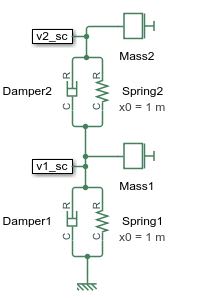ldeem
Structural
- Sep 2, 2013
- 258
I am dealing with a problem where I have a aggregate processing steel structure and the vibrating screen has been switched out for a unit with much higher dynamic loads. This has resulted in excessively high vibrations in the structure which is affecting the screen.
The screen sits on its own spring isolation base. One idea I had was adding additional isolation under the screen base. So there would basically be two sets of springs in series.
I understand spring constants in series are 1/k=1/k+1/k
My questions is
1, Does this idea make any sense? I am thinking more isolation would decrease the dynamic loads the structure sees. I don't think the screen vendor will be agreeable to modifying their design so I am stuck with trying to add additional isolation.
2, I spoke with an application engineer at an elastomeric isolator company who thought the idea could work. He suggested I calculate the Transmissibility just considering the elastomeric system (which I understand how to do). But then a another vendor of spring base systems didn't even want to look at application.
The screen runs around 14.6 Hz and weights 25,000 lbs. I don't know exactly the spring base fn but similar systems are around 1 to 2 Hz.
The screen sits on its own spring isolation base. One idea I had was adding additional isolation under the screen base. So there would basically be two sets of springs in series.
I understand spring constants in series are 1/k=1/k+1/k
My questions is
1, Does this idea make any sense? I am thinking more isolation would decrease the dynamic loads the structure sees. I don't think the screen vendor will be agreeable to modifying their design so I am stuck with trying to add additional isolation.
2, I spoke with an application engineer at an elastomeric isolator company who thought the idea could work. He suggested I calculate the Transmissibility just considering the elastomeric system (which I understand how to do). But then a another vendor of spring base systems didn't even want to look at application.
The screen runs around 14.6 Hz and weights 25,000 lbs. I don't know exactly the spring base fn but similar systems are around 1 to 2 Hz.

